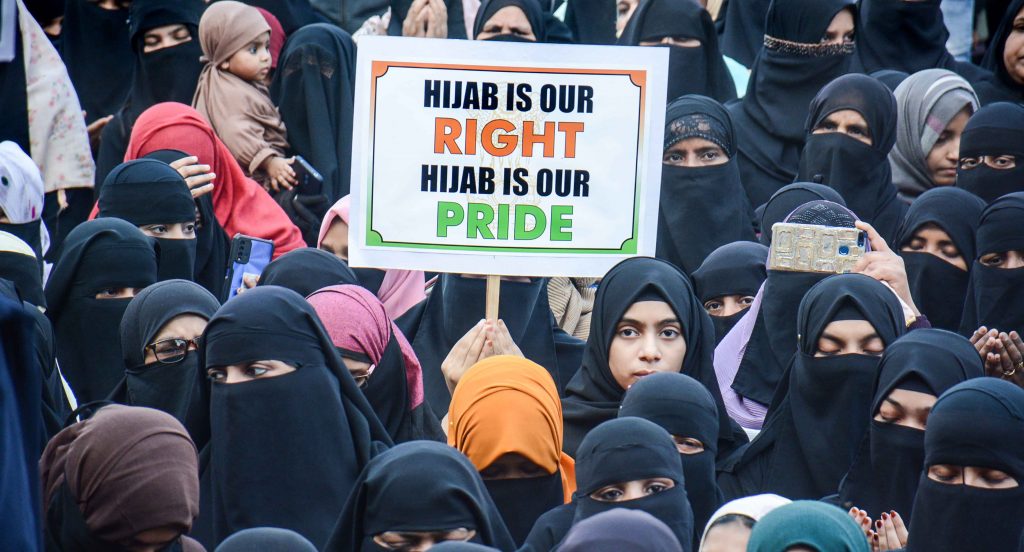Bangalore: Challenging the government order restricting the use of any cloth that can disturb peace, harmony and, law and order, the girls who petitioned in favour of hijab requested Monday the Karnataka High Court to allow them to wear Islamic headscarves of the colour of their school uniforms. The girls made the plea to the full bench of the High Court comprising Chief Justice Ritu Raj Awasthi, Justice JM Khazi and Justice Krishna M Dixit.
“I am not only challenging the GO but also asking for a positive mandate for allowing me to wear a headscarf of the same colour of the uniform,” advocate Devadatt Kamat, appearing on behalf of the girls of the government pre-university college in Udupi, told the bench. Kamat also claimed that the central schools permit Muslim girls to wear headscarves of the school uniform colour and the same could be done here.
According to Kamat, headscarves are an essential religious practice, and restricting its use was violating Article 25 of the Indian Constitution.
Also read: Hijab row: ‘Fundamental rights can’t be curbed for public order’
Article 25 reads: “Subject to public order, morality and health and to the other provisions of this part, all persons are equally entitled to freedom of conscience and the right freely to profess, practise and propagate religion.”
It also says that nothing in it should affect the operation of any existing law or prevent the state from making any law regulating or restricting any economic, financial, political or other secular activity which may be associated with religious practice and regulating or restricting any economic, financial, political or other secular activity which may be associated with religious practice.
Kamat argued where was the law as mandated under Article 25 regulating or restricting any economic, financial, political or other secular activity.
The advocate for the Muslim girls also said the College Development Committee (CDC) comprising an MLA has been authorised by the government to decide the uniform.
“A CDC comprising an MLA is an extra constitutional authority and a third party to decide what to wear. The government has assigned its responsibility to this third party,” Kamat argued.
He also informed the bench that the girls studying in the second pre university class have been wearing hijab for the past two years ever since they took admission. Due to the other students who suddenly sported a cloth displaying their religious identity, the fundamental rights of his clients were curtailed, the lawyer argued.
“State says that wearing of head scarf can be a problem as other students want to display their religious identity,” Kamat pointed out.
The court adjourned further hearing of the case to Tuesday.
Six girl students of a college in Udupi attended a press conference January 1 held by Campus Front of India (CFI) in the coastal town protesting against the college authorities denying them entry into the classroom by wearing hijab.
This was four days after they requested the principal to give them permission to wear hijabs in classes which was not allowed. Till then, students used to wear hijab to the campus and entered the classroom after removing the scarves, the college Principal Rudre Gowda had said.
“The institution did not have any rule on hijab-wearing as such and since no one used to wear it to the classroom in the last 35 years. The students who came with the demand had the backing of outside forces,” Gowda had said.
